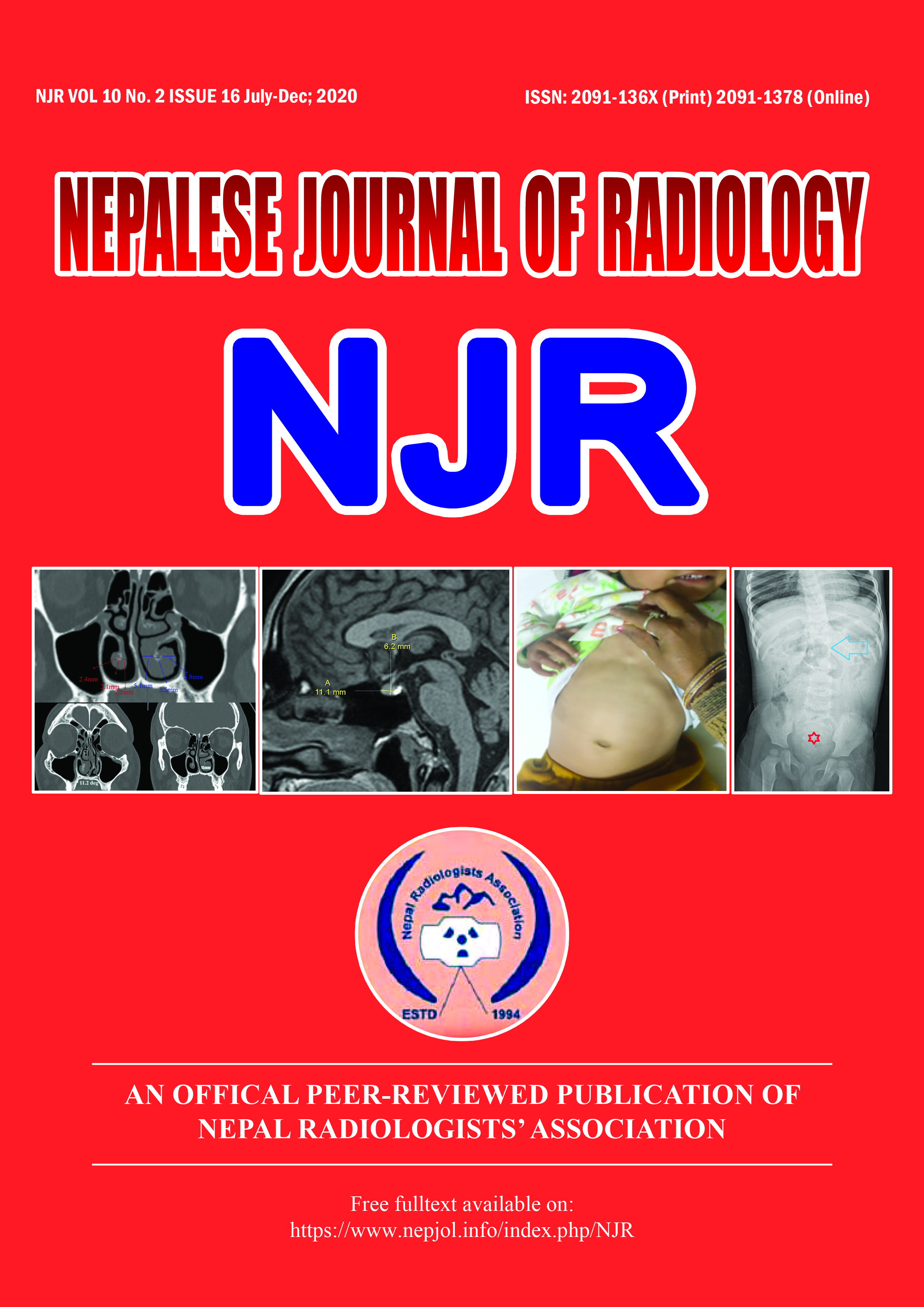Correlation of Portal and Splenic Vein Diameter with Presence and Size of Esophageal and Gastric Varices in Liver Cirrhosis Patients on MDCT
DOI:
https://doi.org/10.3126/njr.v10i2.35969Keywords:
Liver Cirrhosis, Portal Hypertension, VaricesAbstract
Introduction: Variceal formation depends upon the pattern of dilatation of the portal and various splanchnic veins in patients with cirrhotic liver and portal hypertension. Multidetector Computed Tomography (MDCT) may be helpful in the evaluation of such gastroesophageal varices and predicting their risk of haemorrhage.
Methods: After obtaining ethical clearance and consent, 50 patients meeting the inclusion criteria were included and MDCT obtained. The diameters of the portal vein (PV), splenic vein (SV) and left gastric vein (LGV) were measured and originating vein of LGV determined. Pattern, location and diameter of varix was evaluated. Association between the diameters of the originating vein and the grade and pattern of the esophagael and gastric fundic varices was determined.
Results: Of the 50 patients, 41 had gastroesophageal (GE) varices equal to or larger than 1mm with 34% having high-risk varices. The SV was predominantly the originating vein of the LGV. Cutoff SV diameter of 7.75mm and LGV diameter of 5.75mm had a sensitivity of 77.8% with a specificity of 73.2% and 75.6% respectively for the presence of varices.
Conclusions: In our study, EV and GEV was more common and mostly supplied by LGV while isolated gastric fundic varices were supplied by non LGV veins only. The diameters of SV and LGV were associated with the presence and grade of esophageal and gastric fundic varices. MDCT is an important non-invasive modality in patients with portal hypertension and should be used for diagnosis, risk stratification and monitoring of varices.
Downloads
Downloads
Published
How to Cite
Issue
Section
License
This license enables reusers to distribute, remix, adapt, and build upon the material in any medium or format, so long as attribution is given to the creator. The license allows for commercial use.




